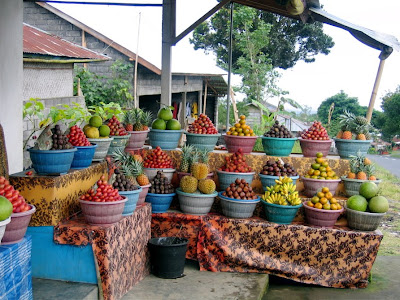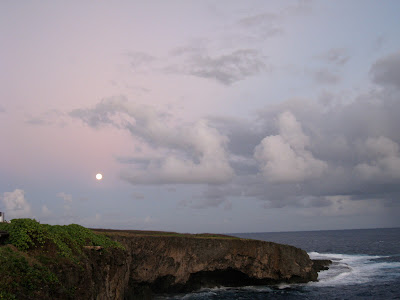

I was standing at the edge of the Grand Canyon – grand is a good modifier here, but if you haven’t stood at the edge, it may not carry the requisite effect. This is a canyon of red and yellow rock, over one mile deep, with a blue green river at the bottom, carving s- turns far below. Condors soar on warm thermals as silence envelops you and you begin to experience vertigo, or an out of body experience as the canyon walls fall away beneath you. That is what its like to stand on the edge of this place.
Then you regain your senses and realize that you are on the rim. Most of the trails stretch 6 miles down to the Colorado River. The rim is dry, windy and distant. The river valley below is a different world altogether. There is life there - water, lots of water, the tinkling of the river and the roaring of the rapids make a big impression on desert ears. It’s a lost world down there, ripe with cottonwoods and datura, and averaging 20-30 degrees warmer than at the top.
Standing at the rim you don’t grok all this – its only when you descend to the river that this lost world reveals itself, and it seems like it’s far, far away. 6 miles may not seem very far, but in this desert, with minimal water and over mile of elevation change, it can be an eternity.
People say we only use 10 percent of our human brain, and that we have access to, but choose to ignore or deny the other 90%. Many maintain that this holds true for the physical body as well. Standing on the rim, it would seem that hiking down to the river would be an endeavor, and that hiking back up would be triple that. It was indeed hard for me to imagine hiking down the South Kaibab trail, and then up the North Kaibab trail, over 21 miles of canyon trail, in one day, and idea fostered by story of rim to rim runs and hikes, and even rim to rim to rim ones. After living in the Southwest for years, I had inevitably stumbled across the reports of crazy people running from rim to rim in 3 hours (the current record time for such a feat). And here is where my analogy takes off. If a human male, aged 35ish, can run from rim to rim of the Grand Canyon in 3 hours, then we are surely only using 10% of our physical abilities. Then, its no large jump to agree with the pundits who claim we are using no more than 10% of our brains (evidence: the current world/humanity condition). I mean: this man can run from rim to rim, covering 21+ miles, with a descent of 5000 feet, and a gain of 6000 feet elevation over this course, in three hours, shattering all ideas of what is possible in the human condition. Followed by: we all have a human brain and heart – we can feel, love, trust, and understand. We all share this planet and our human condition, yet we live in a world where greed and competition create poverty, hunger, pain and suffering for a majority of us. We must have more brain or heart to use, and it followed that the same holds true for our bodies.
To test this hypothesis, I decided to run rim to rim in the Grand Canyon. The date was late September, and my wife dropped me off at the South Kaibab trailhead about 7:30 am after a beautiful equinoxical sunrise. I assured her I would meet her in 6-7 hours on the North Kaibab trailhead, a mere 21 miles and 10000 feet elevation change away. I mean, this was the Grand Canyon after all. I mean, I had run a marathon some tears back, and still run out in the woods on occasion, and I had hiked down to Phantom Ranch a long time ago, but I had no real idea of what the rim-to-rim run entailed. I had a 100oz camelbak, filled full of course, a few power bar type bars, and some salted peanuts, and a mini almond joy.
I confidently set out in the brisk morning air, clad in my polypro t-shirt, shorts and running shoes, without socks. I felt light and strong, running down the 6+-mile trail, anticipating my arrival at the alluring river below. I passed a few parties getting an early start to the hiking day, and even a mule train further down by the Tonto trail junction. I crossed the bridge over the Colorado River, and took the river trail cut-off to the boat beach where warm sand and sun awaited. As I stripped off my shoes for a dip in the river, I assessed my progress so far. It was about 8:45am, according to river guide who had just pulled in, I had no time keeping device, so needed updates from fellow travelers. I took a brief dip in the breathtakingly cold Colorado, sat down to dry off with a power bar and a handful of peanuts. As I was refilling my camelbak, I overheard the river guide mention to one of her clients that the water we were using came from roaring springs – 9 miles above where we currently stood. Somewhere in the back of my mind these words registered, but, I didn’t pause to understand them, I couldn’t, as this was the first time I was attempting a rim to rim, and thus was in the territory of the unknown.
My break at the river bordered on surreal. I had just descended 5000 or so vertical feet on the scenic South Kaibab trail. Vistas stretched in every direction, with vertical exposure of such degree that you definitely double-checked your footing. Sometimes on the descent I would have to reset my visual, as the peripheral scenery changed so drastically. And then suddenly, I was at the river, the calm, peaceful, abundant river. In a land of extremes, this amount of water seems like an excess, and fills you with heaviness, fullness. As I sat by the water and absorbed this immensity, I scarcely thought of what lay ahead, it was more interesting to look at the lush datura blooms, still unfurled in the morning coolness. But, my brain kicked in a said, hey; you still have 14 miles and 6000 feet elevation to go. So I packed up my bag, and trotted out into the Box, the lower canyon of Bright Angel creek. I don’t know what combination of bonking, vertigo, or other factors on such an endeavor combined, however, for the next few miles I ran in a cloud, just focusing on the trail, as the epic scenery flowed past.
Gradually, my body began to register the toll of this undertaking - little blisters on my big toe, sore quads as I pushed up the North Kaibab Trail, and a mind beginning to chant its mantra: just stop and rest for a while, just slow down, it will feel so good. I knew as I passed Cottonwood Camp, with about 7 miles to go, that to start breaking would lead to the end. I was tired, hungry, and sore, but I had to keep faith that my body could finish. It was my mind now that began to be the adversary. I mean stunning canyon walls of red sandstone, beautiful yellow aspens dotting the hills, surrounded me, and of course that blue sky – there were many worse places I could have found myself that afternoon, and yet my mind doubted. As the distance ticked by, my brain increased its voice – to push on or rest, that was the struggle. This was my first time, I had no expectations, I did not have a real time limit, and I had no certainty I could even finish. Then, lost somewhere in the final 2 miles above the Supai tunnel, as I encountered happy day hikers, mule trains of tourists, and the altitude ticked over 7000 feet, I had to face down doubt and fear. It was here that this exercise took the turn from a nice jaunt in the Grand Canyon, to an epic struggle. I became as a pawn in a struggle between body and mind, river and rim, wet and dry, above and below, yes and no, right and wrong, stop and go. I would make a few switchbacks, then pause for some water, looking up for the North Rim hidden in the pines. Salt dried in white crystals on my face – my vision narrowed. Was I dehydrated? Was I delierious?Could I finish? My focus only held one idea - the rim, as the nice rest by the river became a memory from another universe. And yet, other world's existed here as well, outside of my immediate awareness was superimposed other layers of reality. I was less than a mile below the rim, on a popular day hike route, the hikers were multiplying, a couple sat enjoying the view, two teenage boys walked with their father and grandfather, a group of boy scouts were heading down with full packs. I was locked in an epic struggle, and yet here I was on beautiful fall afternoon here in the world….
Finally, I made the North Rim. 21 miles away lay the South Rim, where I had begun early this morning. The south rim, and the Colorado River below, seemed like they belonged to a dream, hard to imagine that I had been occupying those spaces mere hours before. When I set out, I had no security that my body was up for the task other than that others had done this before. I didn’t know if my mind was up for the task either, the mind being much harder to train, and much more fickle when faced with the doubts and darkness of the unknown. Most of us are more familiar with testing limits in the physical, that is how we like to spend our time. But testing limits in the spiritual, that is a new game, not as comfortable, but vastly rewarding. For some reason on this day, I pushed my body and my spirit to new limits, taking both out of their comfort zone. I came away with a renewed respect for the untapped capacity that we as humans hold inside, waiting to be re-discovered and grown into. As each of us challenges ourselves, we learn more about our capacity for improving our space, and our interactions with those around us. When we challenge our own fear and doubt by testing the unknown, we cultivate a deep compassion for this world, ourselves, and everything around us. I did not complete that crossing of the canyon without infinite aid from water, food, air, beauty, pain, pleasure, and faith. Every detail contributed, and I cannot tell you that each one, each moment was not independent from the next. A water source here, an inspiring vista there, an inner strength, and and outer. In the end it was not a blind hope that I could finish that carried me through, it was a participation and cooperation with all that surrounded me which gave me on some level, a know-ledge, that everything is possible.


























































